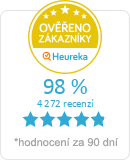Gold Coin 1 Kg D-Day 60th Anniversary 2004 Proof
The product cannot be ordered now.
NOT IN STOCK
View the product
Detailed description
Kilo gold coin - 60 years since the Normandy landings
A unique gold coin issued in 2004 by the Estates of Alderney, struck by the British Royal Mint at one kilogram in top proof quality, to commemorate the 60th anniversary of the Battle of Normandy.
The reverse of the coin depicts Allied soldiers on the beach at Normandy behind barricades that were intended to prevent them from attacking, but ironically became the only cover in this dramatic battle. The precise motif is complemented by the inscriptions "60TH ANNIVERSARY OF D-DAY" and the face value. The obverse shows a traditional portrait of Queen Elizabeth II by Raphael Maclough, complete with the inscription "Elizabeth II Alderney" and the year of issue.
The coin comes in a deluxe leather box along with an illustrated and numbered certificate of authenticity in an extremely limited edition of only 60 pieces for the entire world!

D-Day
D-Day is a term used in English military parlance for the day on which a military attack or operation begins. The code name also originated from the fact that the English original abbreviation D-Day (day of deliverance) means day of liberation.
 The most famous D-Day so far is June 6, 1944 - the day the Battle of Normandy (Operation Overlord) began, initiating the Allied liberation of Western Europe. The invasion was first planned for 5 June 1944, but bad weather caused a postponement. The Supreme Allied Commander, General Dwight D. Eisenhower, postponed the landing to June 6, and this date is now known as "D-Day". Because of this, other names were used for future events. For example, "A-Day" (the invasion of Leyte, Douglas MacArthur), "L-Day" (the invasion of Okinawa). The Allied-proposed invasions of Japan on "Day X" (Kyushu, planned for November 1945) and "Day Y" (Honshu, planned for March 1946) did not materialize.
The most famous D-Day so far is June 6, 1944 - the day the Battle of Normandy (Operation Overlord) began, initiating the Allied liberation of Western Europe. The invasion was first planned for 5 June 1944, but bad weather caused a postponement. The Supreme Allied Commander, General Dwight D. Eisenhower, postponed the landing to June 6, and this date is now known as "D-Day". Because of this, other names were used for future events. For example, "A-Day" (the invasion of Leyte, Douglas MacArthur), "L-Day" (the invasion of Okinawa). The Allied-proposed invasions of Japan on "Day X" (Kyushu, planned for November 1945) and "Day Y" (Honshu, planned for March 1946) did not materialize.
In landing, Allied forces broke Hitler's Atlantic Wall and reopened the Western Front in northern France. Several factors played a role in the course of the battle - the advantage of complete surprise on the part of the Allies, their overwhelming superiority in all types of weapons, their excellent preparation (they had developed a large number of brand new landing techniques), the well-organized activities of the French Resistance, and last but not least, the serious shortcomings of the Atlantic Wall, the low quality of the troops that were to defend it, and the complete absence of the Luftwaffe over the landing beaches and the English Channel in the first phase of the landing operation.
The beaches situated northward towards the British Isles, on which the Allies landed, were given code names, reading (from west to east): Utah, Omaha, Gold, Juno and Sword. The first two beaches formed the American First Army sector, the remaining three belonged to the British Second Army sector (Juno was Canadian). German troops were eventually pushed away from the beaches and forced to retreat south and east. However, a large number of them were destroyed, either due to continuous Allied air attacks, or due to Hitler's bravery (the troops were not given permission to retreat in time). The heaviest fighting took place on the beach codenamed Omaha, in Lieutenant General Omar Bradley's 1st US Army's operational zone, where the shores were very steep and the beach was well covered by crossfire from numerous machine guns and cannons. Despite significant losses and initial chaos in the command of the invading troops, this beach was also secured and captured on the evening of 6 June.
Product Specifications
Application form
Thanks to our position on the market, we can try to provide you with a product that is currently sold out or unavailable for a longer period of time. Simply fill in the application form and we will contact you as soon as we are able to secure the product.
Filling in the application form is not binding for you.
Buyback contact form
We will be happy to buy investment metals purchased from us or from our competitors. Our customers always get the highest price offered at any given time. Fill out the form below and we will contact you. Thank you for your trust.




